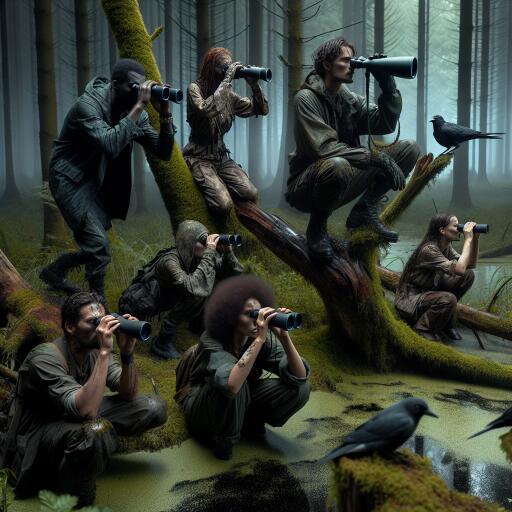
Sinister ‘Birdwatchers’: The New Threat to Avian Conservation
Within the vibrant community of bird lovers, a new, disturbing trend is casting a shadow over the joys of birdwatching. Individuals masquerading as enthusiasts and photographers are, in dark reality, poachers on a mission to locate and capture endangered bird species.
These unscrupulous individuals employ deception to infiltrate online forums and communities dedicated to birdwatching. Their motive is clear: to gather precise locations of rare birds, exploiting the passion of genuine birdwatchers for their nefarious purposes. The prices on the illegal wildlife market can range from modest to exorbitant, fueling this unethical pursuit.
A respecter of wildlife, Peter Ong, shared insights into the modus operandi of these poachers. Ong, a seasoned wildlife photographer and a voice for biodiversity, has observed firsthand the consequences of sharing too much information online. He advocates for restraint in disclosing the whereabouts of photographed birds to protect these vulnerable species from poaching.
While exploring the natural beauty for his book on biodiversity, Ong encountered evidence of poaching activities. From animal traps to litter, the signs were unmistakable. He stresses the importance of alerting authorities rather than confronting these often dangerous individuals directly.
The Internet, while a boon for sharing and learning, has inadvertently facilitated this malpractice. Henry Goh, a significant figure in bird conservation, calls for social media platforms to play an active role in curbing posts that could lead poachers to their quarry. Goh believes education plays a crucial role in conservation, advocating for it to start as early as primary school to nurture a society vigilant against poaching.
Authorities are not blind to these actions. The Wildlife and National Parks of Peninsular Malaysia Department (Perhilitan) has acknowledged the threat and is taking steps to monitor and protect critical habitats, especially nesting sites that are particularly vulnerable. Poachers, it seems, often target these locations to capture juveniles, a practice that could severely impact bird populations.
The department has had some success in thwarting these activities. Recent operations have led to arrests and the seizure of numerous birds, including protected species bound for illegal trade. The success of these missions underlines the critical role of cooperation between law enforcement and the community in safeguarding wildlife.
In light of these challenges, there is a call to the birdwatching community for increased vigilance. Sharing the beauty of these creatures through photography and observation should never lead to their endangerment. By withholding specific location data and being cautious about online interactions, bird lovers can help protect the species they admire.
The penalties for those caught in the act of poaching are severe, with fines and imprisonment reflecting the gravity of the offense under the Wildlife Conservation Act 2010. Yet, enforcement alone is not enough. It requires a collective effort from the community, authorities, and platforms hosting wildlife content to ensure that the spectacle of birdwatching remains a joy and not a jeopardy to bird populations in Malaysia and beyond.
As we navigate the complexities of digital sharing and environmental conservation, let’s remember the fragility of the natural world we cherish so deeply. It’s in our hands to protect, for now and for generations to come.





Leave a Reply